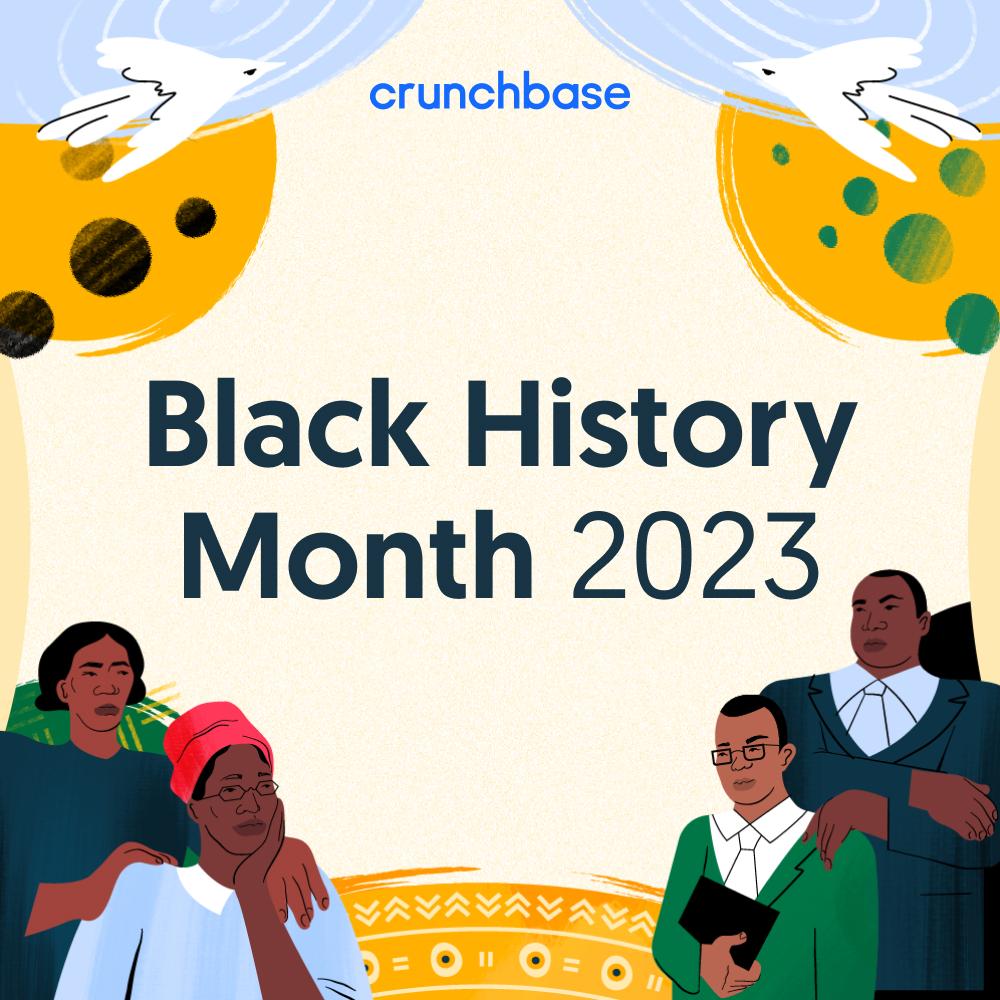Crunchbase Spotlight is a series that celebrates diversity and inclusion in entrepreneurship, venture capital, and tech by profiling people of color, women, and individuals who identify as LGBTQ.


Diane Henry is the Founder of Rogue Capital Collective, a venture capital firm that invests in tech startups that focus on building solutions in the following categories: the future of money and real estate.
As a former founder who bootstrapped a commercial real estate company prior to becoming a VC, Henry is in a unique position to share insights from both sides of the table.
I had the privilege of talking with Henry about her career as an entrepreneur and now investor, how her investment firm got started, and several topics that give insight into how venture capitalists think.
Below is our conversation, edited for brevity.
JB: Prior to starting Rogue Capital Collective, what did you do in the early days of your career?
DH: Before Rogue, before I was an investor in this capacity, I bootstrapped a commercial real estate business in Manhattan. When you start out scrappy the way I did, you learn a lot across functions. So, I got really good at everything from identifying talent and recruiting to designing sales processes that can replicate results to sustaining team morale even in adverse market conditions. And most of all, I learned how to win when you don’t have a head start and nobody really sees you coming. Those are my early days in terms of before Rogue.
JB: I want to dig into that a bit. It’s an interesting background – going from a bootstrapped real estate company and to tech investing. How did you make that transition?
From the outside it seemed was like a leap when I transitioned from commercial real estate to tech startup investing, but the truth is a lot of my clients in my previous business were rapid growth tech startups. I was already working closely with founders before I had this role of investor. I think it’s funny to now be a person who invests in startups for a living. When I started my company I didn’t have angels or outside capital. I learned to accomplish more with less. I know first hand what a difference that makes.
To be clear, there are benefits to doing it both ways. So it’s not like getting the venture backing is fundamentally better, it’s just different. And for venture compatible startups, access to capital expands the realm of possibility.
JB: What made you want to get into the VC game?
DH: “Getting into the VC game” really wasn’t how I approached this. I didn’t look at it that way. I’m more driven by curiosity, building something from nothing, solving real problems and being of service. I was more interested in being an extremely effective advisor & investor and helping leaders build something great that didn’t exist before. And if they happen to be first-time founders like I once was, they may have friends and family who mean well but don’t actually understand what goes into building a business from the ground up. It’s a very specific lifestyle and a crazy amount of pressure. It’s a very specific human experience to build a business from scratch, and a whole other level to take it to scale.
So I want to bring fuel for this tribe of founders to pursue this very specific line of work. I’m an investor and I’m invested. That relationship and that outcome, that’s what I pursue. It’s less, “Oh I wanted to break into the VC game.” and more “Where will I add specific value in this particular asset class?”.
Being invested in founders is important to me because entrepreneurship can be a really isolating process. When you have adults whose livelihoods depend on how you perform in your role as an entrepreneur, company builder, and leader, that’s intense. When the market goes sideways or there’s a macro event that impacts both your business and the world beyond your business. That’s where leaders test their mettle.
We know it’s not just cute or trendy to be an entrepreneur. You can pour as much cold-brewed coffee over it and put as many repurposed wood tables around it as you want. The actual doing of it takes a lot. And it gives a lot. That reality doesn’t make it any less worth it, it just makes it a lot different than it seems from the outside.
A strong support structure, which can include investors and advisors, is mission critical both in terms of personal flourishing and in terms of business outcomes.
JB: Let’s talk about Rogue Capital Collective. Can you explain what the company does?
DH: Rogue Capital Collective invests in seed stage tech-enabled startups. I call it a collective because seed stage startup investing is highly collaborative. No investor truly does it on her own, there’s a whole network of interdependent relationships behind every success.
I think that the seeds for Rogue were planted a long time ago. I’ve always been a hobbyist investor. Even with very modest amounts of capital, I would make tiny investments in high potential companies. Over time, I realized I was repeatedly beating the market and that spotting opportunities early plays to my strengths. When it was time to level that up, Rogue was created.
JB: What is the focus of Rogue Capital Collective in terms of the types of investments it makes?
DH: Right now there are two specific areas that I’m focused on for investments. One is what I call the future of income, the second is real estate technology.
I’ve always been most interested in startups that are solving problems that affect the way everyday people live. I think that’s where the biggest opportunities are, and that’s where I find the most personal resonance.
When I say Future of Income, I’m not referring to the gig economy or even the Future of Work. I am referring to the various ways that people pull in money that isn’t necessarily connected to employment or traditional work. This can include recreational income. If I’m on a gaming platform where I can acquire credits to unlock access to game features and those credits can be exchanged for money or other value, that’s connected to the future of income. If I’m a retail investor managing a small stock portfolio of my own or investing in alternative assets online, I would count that as part of the future of income.
I also still look at products geared toward financial literacy or empowerment for anyone with less than a quarter of a million in assets. The banking and wealth management industry is generally optimized for people who have this level of liquidity. The vast majority of the population, including a lot of high earners, fall below that level.
So business model innovation for financial advisory products geared to that market, whether it’s career development or it’s personal money management, is still very exciting. Beyond straight savings apps, there’s a lot of white space in other areas of personal finance.
So, that’s the future of income. And then there’s the future of real estate tech – I like data-driven real estate tech solutions. Real estate was really slow to change. There’s been a lot of activity around brokerage and around shared office and shared home space, but not a lot around data that helps make better real estate decisions. So, I think both from the consumer side and from the property owner’s side, commercial, and residential. That’s where I see a lot of unmet potential.
JB: When you’re evaluating investments, before you write a check, what type of characteristics are you looking for in a company?
DH: I approach startup investing a little bit differently. For one, I like to invest in founders who are also leaders. What I mean by that is, I’m not just talking about charisma or an extroverted personality. I look for the type of executive presence that comes from believing in what you’re doing and knowing that you will find a way or make a way to see it to fruition because you know it’s important. And that’s rare.
There are a lot of talented founders. Some of those talented founders are also investable founders, and then some smaller percentage still meet the criterion I just described. And then, of course, I also want to see a founder who’s credibly positioned to deliver on their potential. It’s a plus when I see founding teams with complementary skill sets versus having identical professional backgrounds to one another. The team can move faster when one person is making up for what the other person doesn’t have in terms of a skillset. That kind of dynamic can help the startup move forward a lot faster than trying to shore up a shared set of weaknesses.
So these features are also a plus. Then from there, we can evaluate the solution they’re building for a specific problem.
JB: So from that standpoint, do you have any examples, whether it’s a company that you’ve invested in or just somebody out there in the world that you admire, of founders who exemplify that leadership quality that you’re speaking to?
DH: Yes, I do. I would say that Jewel Burks of Partpic has those qualities. Jewel is someone who I actually knew I was going to invest in when I met her. At that point, it was one of those things where it was hers to lose. So the diligence process was just, are we going to pull any rabbits out of the hat that I wasn’t expecting? Am I going to see something that changes my mind after the fact? That’s on an intuitive level. But gut will take you so far, diligence will take you the rest of the way. In that case, I did see those qualities and she’s not alone. Generally speaking, that’s a shared feature of my portfolio companies, but she’s someone who’s an example of that.
JB: As a VC, you get pitched all the time. What do entrepreneurs need to be aware of when pitching a VC?
DH: The thing that they should know is that VCs are subjective and they’re human. I think there’s this perception that there’s a code, that you have to crack the code, and if you say the right things the VC dollars will come out of the slot machine like there’s a system that needs to be gamed properly. Don’t get me wrong, everything is a game and everything has its levers that open or shut doors. So there’s a modicum of truth to that.
At the end of the day, you’re actually talking to subjective people, no matter how much people pretend that it’s an objective sort of purely merit-based process. It’s more nuanced than that. So I think that you can play that fact to your advantage if you do a couple of things first.
One I think is that it’s important to be unequivocal about the current value of what you’re building. You have to know where you currently stand and what it’s worth in the marketplace as VCs. That means, how do you self-assess your traction, your team? You’re not expected to have everything before you can pitch, that’s the whole reason that getting the investment dollars will make a difference.
But you do have to bring something to the table and you have to know how to assess the value of what you’re bringing. To be clear, I’m not talking about valuation. I’m talking about traction and how that traction compares to the next company a VC might be pitched by. How do you compare in terms of that? Where are you strong and what’s that worth in the current marketplace.
That type of information and perspective can be quite useful.
You always have two scorecards, whatever you’re doing in life or in business, including pitching – you need to know subjectively and objectively what your level is. The subjective component is where the personal confidence in yourself and in what you’re building comes in. The objective part is getting sanity check feedback from credible advisors you trust, including people who generally see things differently from you so that you’re not trapped in your own confirmation bias bubble. That’s the objective feedback like, “Okay, this is where you’re strong, this is what this traction is worth, this is where your company’s positioned. Are you ready for VC? Not ready for VC?” Knowing that level, that’s the objective assessment.
If you have those facts in hand – both objectively and subjectively what your company is worth – and I’m not talking about valuation when I say worth, then you are better positioned to go into the pitch and have something good happen, especially if you’re pitching to the right people.
The best pitches I’ve seen have come from people who know why they’re pitching me. Even if they never tell me, they know why me. I’ve given a TED talk recently, I’ve published my post, my website talks about what I invest in. It’s not hard to find out what people are interested in these days and what they stand for. So if you’re pitching to a VC and you know these things about them, then you know that you’re pairing correctly.
There’s some room for serendipity, but the whole process can’t be serendipity. There has to be some intentionality about how you choose the way that you direct your efforts when you fundraise.
JB: When it comes to pitch decks, what do you look for and what tends to resonate with you?
DH: To be clear, not all investor’s respond to cold contacts. I do. Not frequently because there are only 24 hours in a day, but I will always read it, whatever you send me.
I always devote a sliver of my time to reading decks from people I don’t already know. Or I get somebody, one of my interns or somebody in my network who knows the space, to look at it. I always will make that effort.
The reason is that I know what it’s like to be outside of an industry, and the truth is that a lot of good opportunities are going to come from places where the industry currently isn’t looking. The whole closed-network feature of the [tech] industry, there are lots of reasons for it. I totally get it. But I like to leave the door open for new players to come in and have a shot.
When it comes to the deck, it’s not this formulaic thing where you could crack the deck code and get the investment dollars. First and foremost is that the deck reflects what I currently invest in. I need to know that you are able to take two minutes to see that right now what I’m focused on is the future of income and real estate tech.
If you did that, and you mention that, that’s going to make me give your deck more time than I would for just someone who’s random. Obviously, if you have nothing to do with where I invest, then I’m not going to consider it but if you took the time and you show me that you took the time, that’s worth something.
JB: Without naming names, what has been the worst pitch you’ve ever seen or heard?
DH: The thing is, if I did my job well, a founder has been vetted for fit before we’re sitting down together. I’m not a big fan of playing games with founder’s minds, so if we’re in a meeting it’s because I already take you seriously.
With that being said, my least favorite type of pitch is one where let’s say I’m judging a startup competition and the panel is giving feedback and a founder gets really defensive. That’s super awkward for a number of reasons. One, coachability is a good attribute for founders. Coachability doesn’t mean that you take everything that anyone else says as Gospel. What it does say is that you’re going to process it and that you’re going to process it with a modicum of grace. So if you flip out when you get feedback that you weren’t expecting or that you didn’t want to hear, that’s not a good look. So I would say that’s not a favored behavior in terms of pitches.
JB: Last question for you. What are some of the better pitches you’ve seen?
DH: I’ll tell you a secret. I think that the best pitches are a conversation. You’re not trying to get someone to want something that they may or may not want, and then the degree to which they don’t want it you’re trying to get them to want it. That’s a pitch. Whereas a conversation is something that both of you are exploring together and that’s where the magic happens. The magic happens when you end up both on the same side of the table, assessing useful fit and exploring possibilities together. Those are the best so-called pitches. They play out more like a conversation.
That’s something I try to cultivate in the experience of being pitched to because I’m not interested in sort of asymmetrical power dynamic conversations. I’m much more interested in exploring what’s possible together.
Stay tuned for the next Crunchbase Spotlight.






